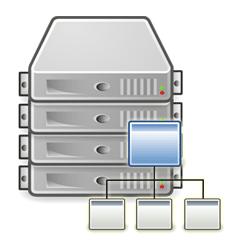 |
 |
 |
RAID Recovery
 |
An array of hard disks known as RAID (Redundant Array of Independent Disks or some call it Redundant Array of Inexpensive Disk) are used in enterprise which is normally the main storage centre for mission-critical data.
RAID was originally deployed at the time when the individual disk capacity was too small to hold huge and demanding operational data. RAID tackles this issue nicely by daisy-chaining individual disk to form a larger volume much sought after during that time. Additional redundancy to increase failsafe is another consideration. Increase in performance for some RAID configuration under specific operational environment is obviously another factor for selection of RAID.
![]()
RAID can be quite complex considering that different users may be using different methods to store their data on their RAID server resulting in different kinds of RAID configuration. Whatever the configuration, the main consideration still hinges on three critical factors - Volume size, Failsafe and Performance considerations.
Common RAID configuration may deploy duplex / mirror, striping (with or without parity) or a combination of these. The different combinations eventually make up the different RAID levels from 1 to 10. Typically, RAID 5 is the most common RAID configuration adopted by corporate users.
Some of the common RAID level we encounter |
||
| RAID 0 | RAID 0+1 | RAID 1 |
| RAID 5 | RAID 10 | |
Why you need RAID Recovery
Many people have the misconception that because you are using RAID 1 or RAID 5, it had built-in redundancy and therefore will not break down easily. As a result, companies normally do not do diligent backups. Unfortunately, this is not the case as a number of unforeseen events will cause the. RAID server failure. In such disaster, their normal operations of company will come to a halt.
Due to the level of sophistication, recovery of RAID server is relatively complex. Generally, it is difficult to find two identical RAID system with the same failure mode. User's recovery attempt would also have altered the level of problem. In fact, alteration of any single disk in the array from its original failed state would have multiplied magnitude of problem which may eventually lead to permanent data loss. We have done up a simple Emergency RAID Rescue Guide and by following such instruction, loss of data could be minimized.
![]()
Adroit Data Recovery Centre has been a specialist in recovering all types and makes of RAID servers. Regardless of your RAID configurations and failure types, we will be able to recover your data promptly to avoid further business lost as a result of RAID server crash.
We service any brand of RAID servers such as Compaq or HP Netserve RAID, Dell PowerEdge RAID, Sun StorEdge, MAC Xserve RAID or your own OEM RAID box. The raid system could be any operating system platform such as Microsoft Windows Server NT/2000 / XP , Linux, SUN Solaris, Mac, Novell Netware etc and the disks drives used in RAID could be either IDE ATA, SATA or SCSI.
Fill up data recovery request form |
Send your media for evaluation | Evaluation Stage | Data Recovery Process | |||



